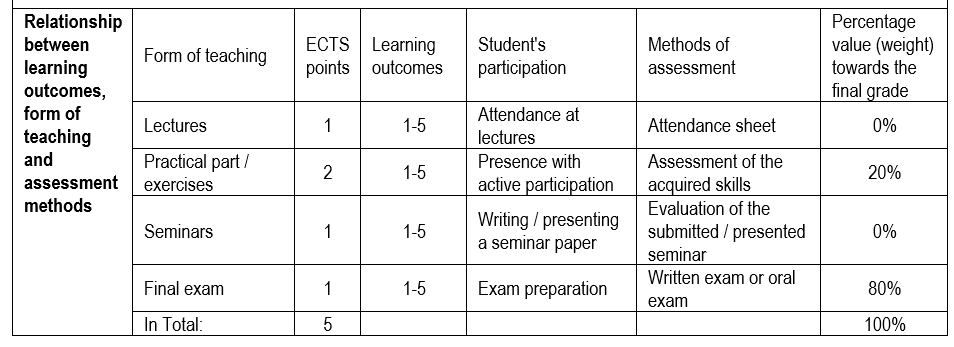Students learn about the function of the normal nervous system. They acquire basics on the physiology of the nervous system and learn the principles of measuring physiological phenomena, as well as to interpret the results of measurements according to the basics. The subject of the physiology of the nervous system is based on the use of acquired knowledge in biophysics, biochemistry and normal morphology. The course develops the ability to resolve problems and critical thinking independently and encourages self-education.
Basic characteristics and function of the nervous system. Organization of the nervous system. Homeostasis as a function of the nervous system. Synaptic transmission. Basic characteristics of sensor systems. Somatosensory system. Physiology of the disease. Vision optics. Photo reception. Visual neurophysiology. Psychophysics of vision. Conducting sound in the inner ear and transduction. Psychophysics of hearing. Device for vestibular simmulation. Smell and taste. Basic motor system scheme. The motor role of the spinal cord. The motor role of the brainstem. Cortical control of movement. Motor function of the cerebellum and basal ganglia. Monitoring of bulbomotorics functions. The role of the vegetative nervous system. Integrative functions of the brainstem. Neural control of instinctive behaviour. Principles of brain cortex structure and function. The physiology of sensation. Speech control. Brain hemisphere specialization. Physiological basics of learning and memory.
Required course materials:
Sveučilišni priručnik „Kako živac živi?“ S. Butković-Soldo, E. Bilić
Bilić E, Žagar M: Polineuropatije: klinička slika, dijagnostika i liječenje Skripta, 2006.
Bilić E, Žagar M: Fokalne neuropatije, Medicinska naklada, 2007.
Upon completion of this course, students will be able to:
1. To determine, recognize and describe the morphological features of the structures of the central and peripheral nervous system and explain their function
2. To judge and explain the cellular, laminar, columnar and areal structure and the main neural networks and disorders of the human cerebral cortex
3. To determine the morphological characteristics of the structure and function of the main types of nerve and support cells of the central nervous system
4. To determine the basic electrophysiological characteristics of neurons, to explain the formation of transmembrane resting potential, action potentials and postsynaptic potentials
5. Critically evaluate the way information is transmitted between neurons, classify and explain the basic properties and mechanism of action of neurotransmitters, and describe the structure of receptors and discuss their role in information transfer



